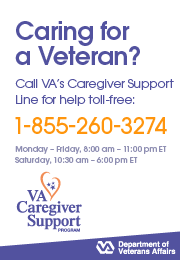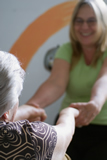RESCUE
HOME |
RESCUE
Fact Sheet Library
HELPING YOUR LOVED ONE BECOME MORE INDEPENDENT
Preventing Falls
Falls are common after a stroke. The good news is that you can help! There are ways to protect your loved one from falls.
What Are Risk Factors for Falls?
- Past falls
- Trouble walking or getting up
- Balance problems
- Feeling weak and dizzy
- Problems with vision and hearing
- Side effects of medicines
Why Is It Important to Get Help?
Falls can cause broken bones, head injuries and even death. Ask your healthcare team for help. Your healthcare team can identify your loved one’s risks for falling. Ask about a falls assessment. Occupational therapists can come to your home and help make your house safer. Physical therapists can teach exercises to prevent falls.
RED
FLAG: Signs
of Trouble
If your loved one falls, get help if they:
- Pass out or lose consciousness
- Feel dizzy
- Have pain
- Have trouble walking
- Have a fever
- Have trouble breathing
- Are taking Warfarin**
|
How Can You Make the Home Safer to Prevent Falls?
Keep floors clear:
- Remove throw rugs or tape them down.
- Pick up shoes and other items from the floor.
- Push furniture far apart to create space to walk safely.
- Move cords out of the way to avoid tripping.
Make stairs and hallways safer:
- Install handrails on indoor and outdoor stairs.
- Fix broken steps.
- Make sure carpet is securely attached.
- Keep lighting bright, especially in stairways and doorways.
Keep the bathroom safe:
- Put non-slip mats and grab bars in bathtubs and showers.
- Install a raised toilet seat.
- Use a plastic seat in the shower or tub.
Prevent falls in the bedroom:
- Use nightlights in the bedroom to make walking at night safer.
- Place a commode beside the bed. Your loved one won’t need to walk to the bathroom at night.
How Can Your Loved One Call for Help in an Emergency?
It is important for your loved one to be able to call for help when they need it. Buy a medical alert system that your loved one can wear or carry. Ask your healthcare team about where to buy alert systems. Have your loved one carry a cell or portable phone at all times to call for help. Keep emergency phone numbers in large print beside every phone.
What Are Other Ways to Prevent Falls?
Exercise with your loved one:
- Regular exercise lowers the chances of falling.
- Exercises that improve balance, such as tai chi, are helpful.
- Your local health or senior center may have exercise and walking programs.
- The Senior Planning Services has a fact sheet that shows you how to do exercises from home. The More Resources section has the link to the fact sheet.
- Learn more about exercise after stroke.
Keep an eye on medicines:
- Ask a pharmacist, doctor or nurse to review your loved one’s medicines.
- Some medicines make people dizzy or sleepy and cause falls.
- Learn the side effects of over-the-counter and prescription medicines. Warfarin (Coumadin®)** increases the risk of bleeding. This makes bruises and cuts more serious. Call your healthcare team if your loved one falls while taking Warfarin**.
- Watch for side effects. Call your healthcare team with your concerns.
- Learn more about managing medicines.
Have your loved one’s vision and hearing checked:
- Good vision and hearing lower the chances of falling.
- Have your loved one’s vision checked at least once a year.
- Change hearing aid batteries often.
Wear the right shoes:
- Your loved one’s shoes should have rubber soles and heels.
- Buy shoes with short laces or Velcro®** fasteners.
- Avoid slippers or wear non-skid slippers.
Use the right devices to keep steady:
- A cane or walker can provide support.
- Ask your healthcare team about walking aids and how to use them.
- Lehigh Valley Hospital and Health Network has information on fitting yourself for a cane or walker. It also provides tips on how to use one safely. Get more tips on using canes safely on the Lehigh Valley Hospital Web site. The More Resources section has contact information.
- Learn more about assistive devices.
Helpful Tips
- Teach your loved one to stand up slowly after sitting.
- After lying down, your loved one should sit on the side of the bed for a few minutes before standing.
- Watch for things that can cause falls when walking. Uneven sidewalks, door steps, liquid spills, ice and pets can cause falls.
Remember
- Make your home safer to prevent falls.
- Do balance exercises, such as tai chi. These types of exercises can lower the chances of falling.
- Have your loved one’s vision and hearing checked regularly.
- Talk with your healthcare team about ways to prevent falls. Ask the team to review your loved one’s medicines.
More Resources
The following resources are related to this fact sheet only. View a full list of the resources from all RESCUE fact
sheets.
Fall Prevention Center of Excellence
Web: www.stopfalls.org*
Phone: 1-213-740-1364
The Fall Prevention Center of Excellence has tips on ways to prevent falls both at home and in the community. Click on the link “Individuals and Families” for more information.
|
 |
Home Safety Council
Web: mysafehome.net*
Phone: 1-888-556-9947
The Home Safety Council has an interactive tool that allows you to view areas of risk in the home. It offers fall and injury prevention tips to help make your home safer.
|
Lehigh Valley Hospital and Health Network
Web: www.lvh.org*
Lehigh Valley Hospital and Health Network has an article called “Getting Fitted for a Cane or Walker.*” It provides information on fitting yourself for a cane or walker
|
My HealtheVet
Web: www.myhealth.va.gov
My HealtheVet (MHV) provides trusted information on stroke and other health conditions. It also provides resources for stroke caregivers and tools to track your loved one's health.
Visit the My HealtheVet Caregiver Assistance Center for more information on caregiving.
|
Senior Planning Services
Web: www.seniorplanningservices.com*
Phone: 1-805-966-3312
The Senior Planning Services has more information about exercise, including a fact sheet on exercises to do at home*.
|
*Link Disclaimer: Links to information
and Web sites outside of the Department of Veterans Affairs do not
indicate an endorsement of products or services offered by the sites.
In addition, these sites may have privacy and security policies
that are inconsistent with those of VA.
**Brand Name and Medicine Disclaimer: Brand
names and types of medicines are provided as examples
only. Their inclusion does
not mean that these products are endorsed by VA or
any other Government agency.
Also, if a particular brand name is not mentioned,
this does not mean or imply that the product is unsatisfactory.
Download
a free version of Adobe Reader* to view PDF files. |
References:
VA National Center for Patient Safety. (2008). Are you or a loved one at risk for falls? Retrieved May 27, 2008, from the falls tool kit: http://www.va.gov/ncps; Centers for Disease Control and Prevention. (2008). Falls among older adults: An overview. Retrieved July 31, 2008, from: http://www.cdc.gov*; Houts, P.S. (Ed.). (2004). Eldercare at home. New York, New York: The American Geriatric Society for Health in Aging; American Academy of Orthopaedic Surgeons. (2008). Lifting techniques for home caregivers. Retrieved July 31, 2008, from: http://orthoinfo.aaos.org/topic.cfm?topic=A00096*
These materials were created for the project:
Web-Based Informational Materials for Caregivers of Veterans Post-Stroke
Project Number SDP 06-327 funded by VA HSR&D Quality Enhancement Research Initiative (QUERI); Supported by the
Stroke QUERI
Visit the Stroke QUERI Website
|
























